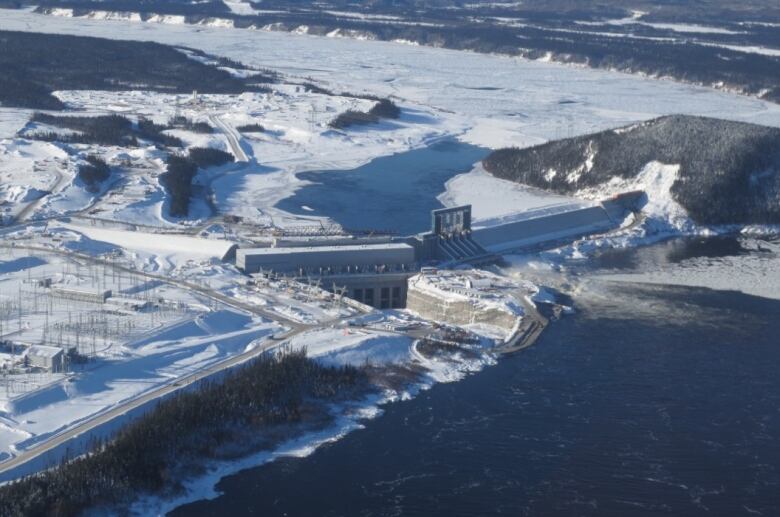Failed Muskrat 'dome' was innovative, but very risky, says engineer
Williams Engineering criticized planning, execution for Muskrat, but Nalcor fires back at report authors

Theintegrated cover system that failed so spectacularly on the Muskrat Falls project in 2014 was an innovative, but also very riskyundertaking, says a structural engineer who has reviewed the controversial hydro project in Labrador.
Jim Gillilandwas the latest witness to give testimonyat the Muskrat Falls public inquiry about an attempt very early in the troubled project to build a massive steel structure over the construction site for the powerhouse on the lower Churchill River.
The idea was to enclose the construction site so Astaldi Canada, the company awarded the critical civil contract to build the powerhouse and other concrete infrastructure, could pour concrete throughout the frigid Labrador winter and keep pace with a very aggressive construction schedule.

But Gillilandquestioned whether the structure was properly planned, saying it was "not clear to me" based on the documentation he reviewed the degree to which the idea was evaluated by Astaldiand the company leading the project, government-owned Nalcor Energy.
Risk to the project
Gilliland said the conceptual drawings that he reviewed left him with a lot of questions, including how steel columns supporting the roof would be installed and later removedfrom the powerhouse, and how concrete would be moved around the complex construction site.
"When you add in the complicating factors and the overhead cranes and the moving of materials around inside the enclosure,that's a level of complication and risk to the construction process that is in my experience very unique and potentially more risk is added to the project, and ultimately to the outcome of the project," Gillilandtestified.
The so-called "dome" was never completed, had to be dismantled, and resulted in the loss of at least a full construction season on a publicly-funded project that was approved on a very aggressive schedule.
Gilliland said there didn't seem to be a Plan B.
"There were no indications that if this didn'twork they would try something else," he said.
A costly mistake
The cost for the construction and dismantling effort, or the true impacts the misadventure had on the overall project, has never been fully quantified to dateat the inquiry. No one at the inquiry could provide a definitive estimate Thursday.
But it's clear from testimony and evidence that it was a very costly mistake that is still being felt on the project, and the consequences have reached the judicial system as AstaldiandProcoInc., the company Astaldi subcontracted to build the dome, battle it out in the courts.
The problems continued for Astaldi until, in a controversial move, the company was finally evicted from project last fall by Nalcor.
Gilliland, who has a doctorate instructural engineering,was part of a four-person team assembled by Williams Engineering to evaluate the Muskrat Falls project, which is at least $5 billion over budgetand at least two years behind schedule.
The engineering company was hired by the accounting firmGrant Thorntonlast year as part of a forensic and investigative audit of the construction phase of the project. The audit was released in September at the beginning of phase two of the inquiry, and revealed some troubling information about the way Nalcorhandled early warning signs that the project was in trouble.

The Williams' report gave a scathing assessment of the planning and execution of the project, saying that Nalcor and some of it contractors did not follow best practice in anumber of areas.
Nalcor lawyer Dan Simmons attempted to have Gillilanddisqualified as an expert witness, arguing that he lacked sufficient experience. Simmons also challenged some of the documentation used by Gilliland and his team to evaluate the project, saying some of it was outdated.
Gillilandacknowledged his limited experience in the hydroelectric field, butinquiry commissioner Richard LeBlancallowed him to testify, saying "it's always a question of weight with regard to weighing opinion evidence."












_(720p).jpg)


 OFFICIAL HD MUSIC VIDEO.jpg)
.jpg)



























































































